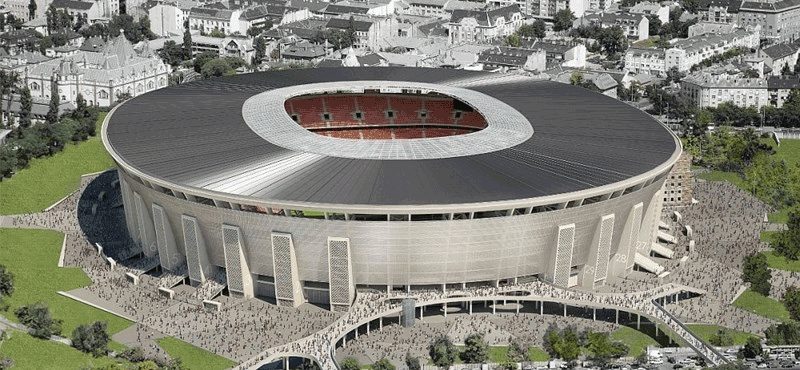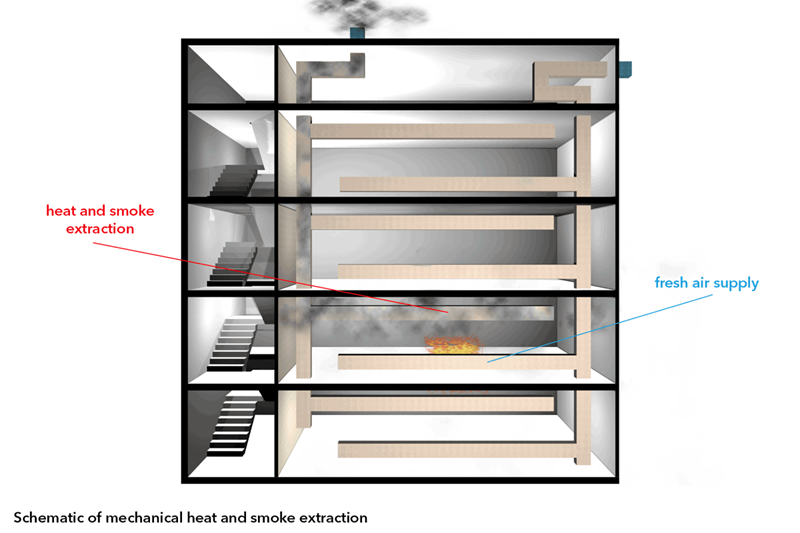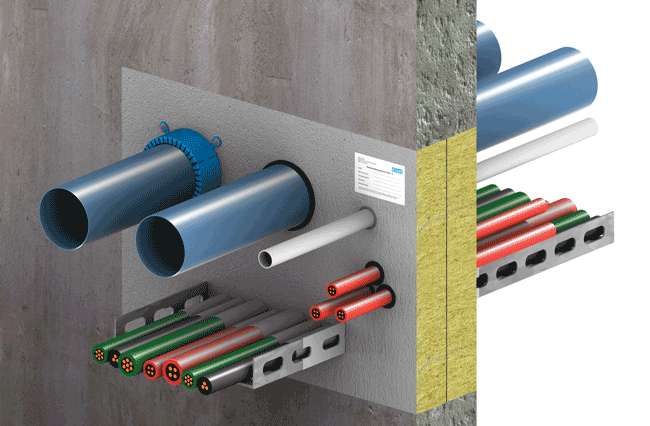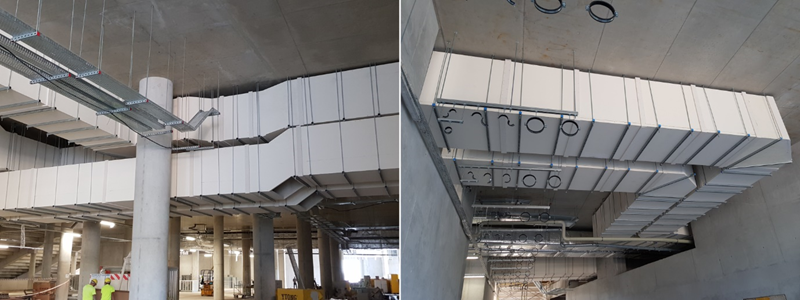Promat Technical Support
Contact our technical support team with your questions on passive fire protection solutions, our products and systems or installation advice...

A project like Puskás Ferenc Stadium, planned to accommodate 67,000 persons, can be discussed from many aspects; this article briefly covers heat and smoke extraction issues.
With multi-storey and high capacity buildings such as sports facilities, safe evacuation and fire protection are priority issues. There are strict rules of law in place for such buildings.There are two main categories of fire protection solutions: active and passive fire protection.
Active fire protection includes on the one hand devices which automatically sense the outbreak of fire, and on the other hand devices that are triggered by these systems or other auxiliary devices and fight the fire by a semi-automatic process or following a given principle. Such systems include, for example, water, gas and foam fire-extinguishing systems.

Passive fire protection systems (architectural fire protection) include all elements of a building which are built in and serve fire prevention without any active firefighting action, increase structural stability, and hinder the outbreak and spread of fire for a given period of time.
Such measures include, for example, smoke extraction and the supply of fresh air. Many buildings have a design which prevents heat and smoke extraction by gravity, and therefore need machinery to create a forced exhaust for heat and smoke extraction and the supply of fresh air.

Passive fire protection structures have tested fire resistance parameters and can slow down or even block the spread of fire for a given period of time.
These structures include the so-called fire prevention seals which are defined as aperture filling, aperture closing and linear aperture sealing systems by the National Fire Safety Code. These are commonly known as passive fire protection blocks, which are used to safely separate the different units of hazard and fire compartments of a building, and to stop heat (parameter “I”) and the physical effects of fire, such as smoke (parameter “E”) or full fire (parameter “EI”), from spreading over into adjacent units.
A key part of passive fire protection is suitable heat and smoke extraction. Mechanical heat and smoke extraction systems often use ventilation ducts running through more fire compartments. It is important to note that regular steel plate ventilation ducts in themselves fail to meet fire protection criteria, as they quickly heat up and deform in fire. Steel ventilation ducts for heat and smoke extraction should be certified, provided with special heat insulation and occasionally with heat dilatation compensators, often reinforced inside.
Besides the above-mentioned very complex steel ventilation duct system, ventilation ducts built from calcium silicate fire protective construction boards are optimised and tested specifically for heat and smoke extraction. Such modern, certified systems are offered by Promat, a manufacturer of fire protection products, and their heat and smoke extraction system, certified as EI 120 S multi, was applied in Puskás Ferenc Stadium. The system is certified for up to 120 minutes by the standard test using a closed-space fire curve, is built from calcium silicate construction boards of fire protection class A1 and can be assembled on the spot as three- or four-sided structures. While conventional ventilation ducts are built and heat-insulated in two steps, this system can be built in a single step, optimising both construction time and material procurement.

The 120-minute multi-fire heat and smoke extraction system installed in Ferenc Puskás Stadium was built by Dibu Kft., a company that has extensive experience in passive fire prevention, guaranteeing the safety of the new football arena.
Contact our technical support team with your questions on passive fire protection solutions, our products and systems or installation advice...
Find the product datasheets, system brochures, Declarations of Performance, installation manuals and other documents you need to get the job done.